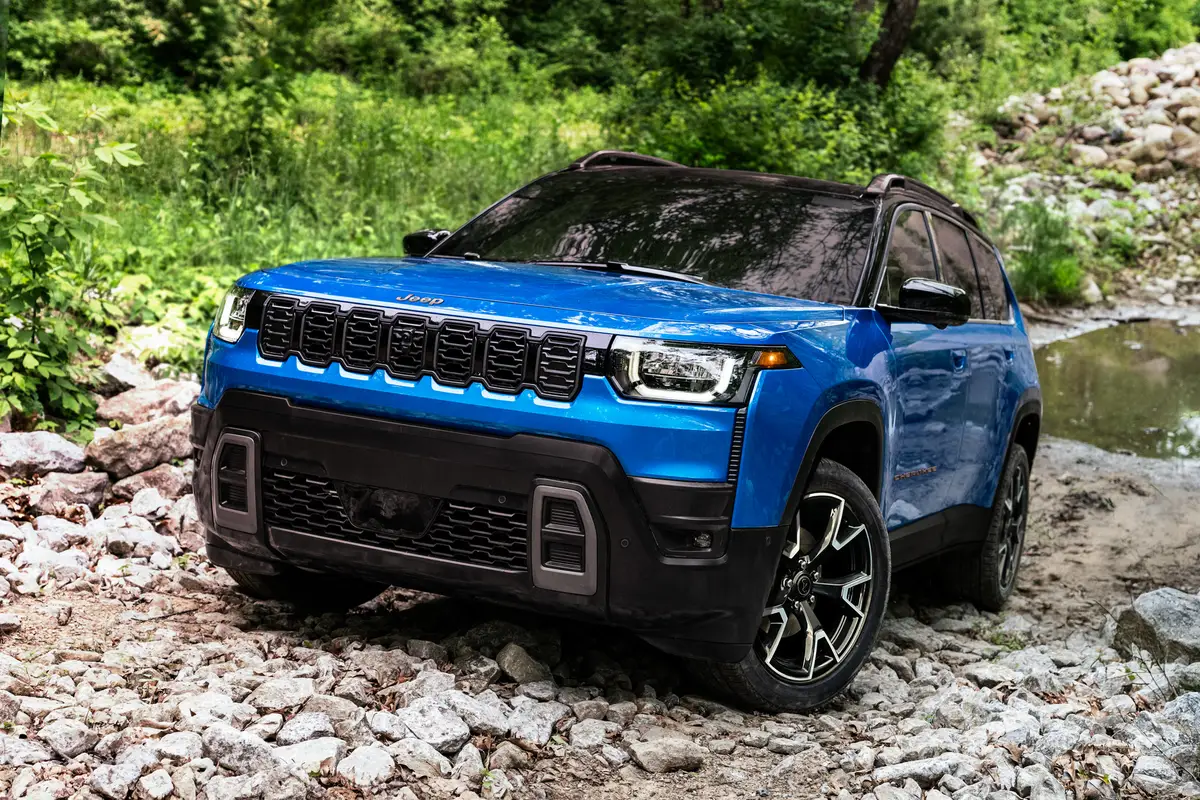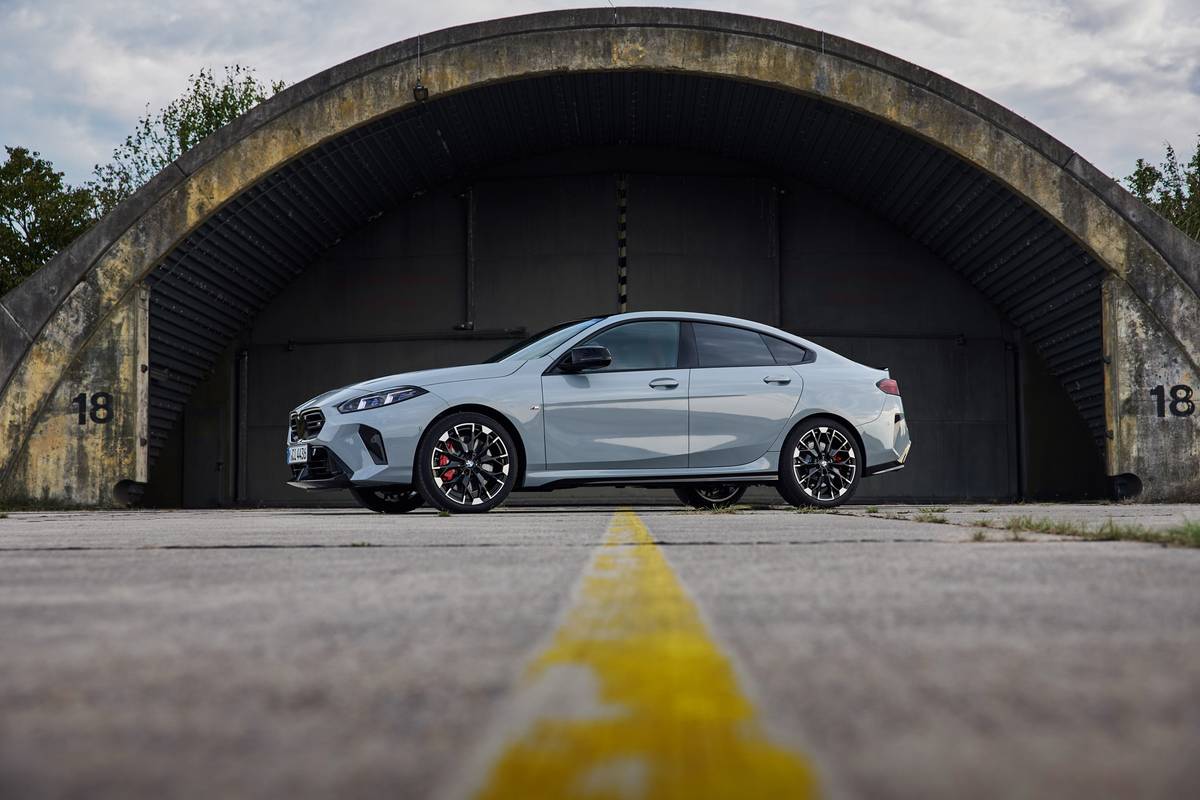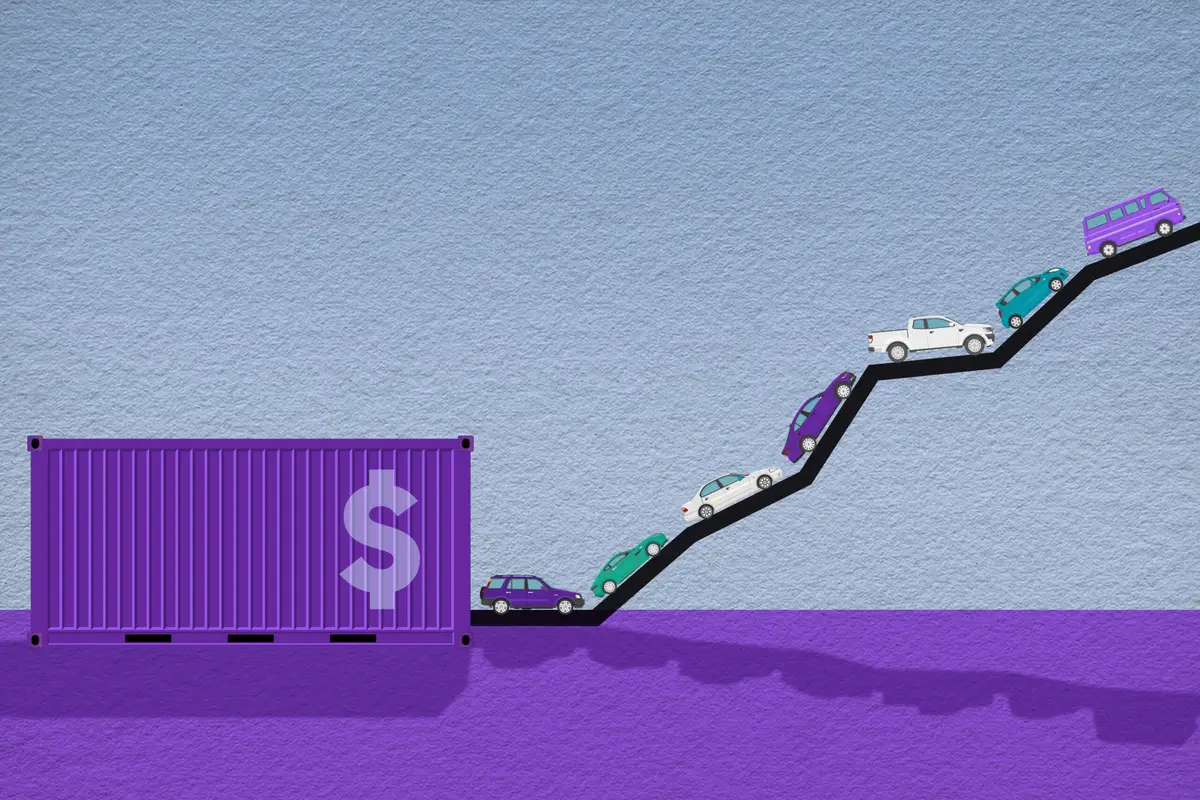Cincinnati.com's view
Santa Fe is a great name for an SUV. The eponymous town in New Mexico is very beautiful and just a bit out front, with plenty of interesting “roads” that call for a bit more ground clearance than a freeway does. The new sport-utility — or XUV, i.e., crossover utility vehicle, as they style it — from Hyundai honors the name.
Based on the mid-sized Sonata car platform, the Santa Fe is designed more for on-road comfort than for off-road exploits; in that respect it echoes the Toyota Highlander tested here last week. Automakers generally have come to realize that the proportion of people buying SUVs who want to get lost in the boonies is relatively small, and those are better served with the traditional body-on-frame, truck-style gravel grinders. With the SUV look becoming paramount, it makes sense to spin these echoic machines off a less rugged, but more comfortable, platform.
Hyundai is South Korea’s largest automaker. In its early years of trying to penetrate the U.S. market, it shipped some shoddy pieces of work that may have looked like real cars, but just didn’t stand up to the kind of flogging they get here. But the company has shown it’s a quick study, and its recent offerings have been getting ever closer to the high standards long ago achieved by Japanese manufacturers. Knowing that it has some bad history to overcome, Hyundai offers extraordinary warranty protection — five years or 60,000 miles bumper to bumper, 10 years or 100K miles on the powertrain, five years – 100,000 anti-corrosion protection and a five-year roadside assistance plan with no mileage cap. Plus, with a less-demanding workforce, it undercuts competitors on price, too.
The usual caution about first-year vehicles is hereby issued, with the further minatory advice that this is Hyundai’s first truckiform essay. All that lawyer-babble aside, I liked the Santa Fe a lot. The exterior styling is a departure, and might be described as overstyled, but, considering the price point at which the Santa Fe competes, the target audience is youthful and more kindly disposed toward blatant than understated.
It’s hard to see in a two-dimensional photograph, but the treatment of the hood and flanks is rather pronounced, with echoes of the swoopy Tiburon coupe. I must say the front-fender bumps at times seemed a bit distracting from behind the wheel, and I never did get a good sense of where the sides or front bumper were. Never mind — on the whole, it’s a breath of fresh air. The California design studio took the lead on this project, with input from other Hyundai think tanks in Korea, Japan and Germany.
The Santa Fe is offered in three trim levels, GL, GLS and the fanciest, LX. Any series can be had as a two-wheel-drive machine, but only the GL is offered with a 2.4-liter four-cylinder engine. The big brothers all have a V-6. The 2.4 makes 149 hp and 181 foot-pounds of torque, not enough to have much real fun in a vehicle that weighs 3,500 pounds in its simplest form. But at a base price of $16,499, with five-speed manual transmission, the most austere Santa Fe, be it ever so pokey, is a compelling alternative to a similarly priced car. The machine offered for this test was an LX, with front-wheel drive. Base price on that number is $20,499. For the extra four Gs, you get a better level of trim, a V-6, side cladding, 16-inch alloy wheels, fog lights, roof rack, remote keyless entry, privacy glass, air conditioning, leather seating, 6-speaker AM-FM-CD stereo, power locks, windows and mirrors, cruise control, tilt wheel, cargo cover and net and dual front depowered air bags.That’s an impressive array.
The inside of the Santa Fe resembled a plastics showroom, with various shades and patterns not getting along too well. A little bit of cloth or even pseudo-wood trim would help a lot. The Santa Fe has MacPherson struts up front and a trailing arm independent rear suspension. Not urprisingly, it rode well and ned its grip even during fleet passage over road irregularities. A front roll bar kept body lean well under control.
The V-6 engine, at 2.7 liters, is somewhat small for an SUV, but as Hyundai reminds us, this is an XUV, which is not going to have to pull down trees or inch its way over boulders. In that context, 181 hp and 177 foot-pounds of torque will do, although maximum output comes rather high on the tachometer with this double-overhead-cam 24-valver. The four-speed automatic transmission was smooth and unobtrusive and, with sufficient accelerator pressure, let the engine wind out to the level where it got intense — and a little raucous. The trannie was a little hesitant on forced downshifts to second or first, but generally behaved well. Top gear is a 0.73:1 overdrive ratio. This translated to about 27 mph for every 1,000 engine revolutions. That’s pretty high, but the gearbox did not hesitate to grab third when circumstances dictated, as during hill climbs or freeway passing.
The base Santa Fe has disc brakes front, drums rear; all the others have discs at the rear, too. Antilock is an option and as such comes bundled with traction control. The tester was so equipped. Stopping was sure and swift, and the antilock mechanism merely buzzed when called upon to perform in a simulated panic stop. Pedal feel was firm and crisp, easily modulated. The traction control seemed a little slow to kick in; with full-throttle dumps, the front wheels momentarily lost their grip. When they did grab the road, there was a noticeable torque-steer bump.
Ergonomically, the Santa Fe was a mixed bag. The instruments were well-placed and legible, and the tilt wheel moved through a large range. Knobs on the stereo and air conditioning were knurled and conveniently outsized. The “front end” of the stereo, however, looked like a generic cheapo, with small, LCD readouts that were hard to discern in bright light.
Steering was light and rather quick, producing good handling feel. The turning circle is a not-unreasonably-large 37 feet. The interior volume of Santa Fe is 130 cubic feet. Of that, 29 c.f. is devoted to cargo with the second row of seats in place, 78 c.f. with them lowered. The tires were moderately aggressive BFGoodrich Long Trail T – As, size 225 – 70 – 16. They sang a bit at speed, contributing, along with suspension and wind noise, to a somewhat elevated background noise level at 70. Ground clearance in 2WD form is 7.4 inches. The AWD setup can clear 8.1 inches. As for towing, a 2WD V-6 machine with trailer brakes can pull as much as 2,700 pounds. Without trailer brakes, a four-cylinder machine is rated at 1,000 pounds, and the V-6 series with antilock can drag up to 1,500 pounds.
EPA estimates for the V-6 FWD machine are 19 mpg city, 26 highway. I averaged 23.8, on regular unleaded. Overall fit and finish were very good. Assuming it holds up long term, the Santa Fe is an impressive first effort. I’m keeping a parking pad open for the AWD version. The tester had a “luxury package” (heated front seats, electrochromic rearview mirror), $295; the antilock – traction control bundle, $595; carpeted floor mats, $80, and roof rack cross rails (!), $180. Total, with freight, was $22,084.
“The Gannett News Service”
Latest news



